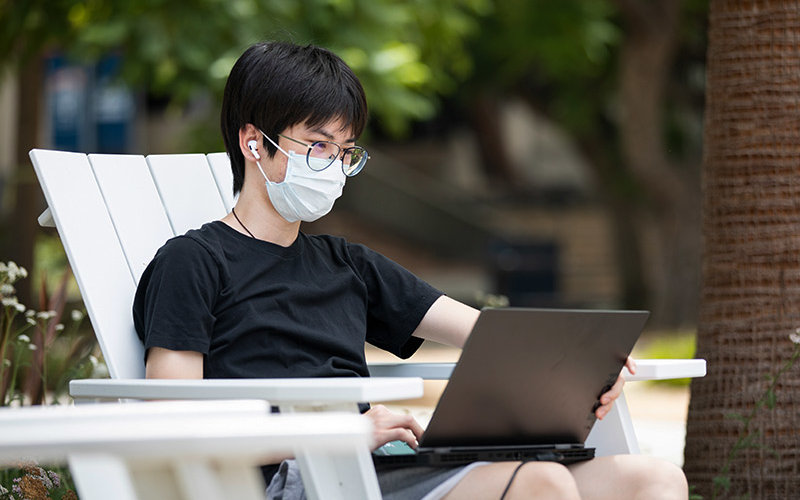
Many are calling it a “lost year” as students suddenly found themselves spending hours in front of computer screens instead of in a classroom setting. Faculty and administrators at Cal State Fullerton were determined to do whatever was necessary to prevent Titan students from dropping out or seeing their grades plummet.
So how do you measure “student success” during a pandemic?
At CSUF, the problem was tackled on multiple fronts with the campus offering virtual advising, outreach campaigns, faculty training, and a host of other interventions to keep students engaged and learning.
It appears that these measures worked.
Comparing data from fall 2019 to fall 2020, the Division of Academic Affairs noticed many positive outcomes.
“The average GPA (grade-point average) among undergraduates increased by 4.5%,” said Karyn Scissum Gunn, associate vice president for student success. “In addition, the freshman average GPA increased by 4.1%.

“Although student outcomes are surveiled across all levels, the freshman focus was particularly significant for fall 2020 because these students had to transition as first-time college students and do so virtually amid an epic global, societal and even personal disruption,” Scissum Gunn explained. “In addition, they had to make final academic preparations for college after abrupt and likely anxious pivots during the last months of their senior year in high school. We wanted to closely monitor their first-term success as Titans and the robust and holistic supports our campus was trying to provide for them.”
Scissum Gunn believes that heightened efforts by faculty members to deliver effective virtual instruction and the comprehensive training on virtual instruction offered by the campus’s Faculty Development Center played a significant role in the rise of student GPAs.
Not only did GPAs improve, there was an uptick in the number of classes that students enrolled in (an increase of 4.8%), possibly due to campus efforts encouraging students to take at least 15 units per semester.
“Student respondents rated maintaining their current course loads and academic standing as matters of concern,” Scissum Gunn explained. “By the end of the term, we saw an increase in the total number of units rise by 4.8% for our undergraduates.”
Other areas of focus were freshman English and math GPAs. Again, students rose to the challenge with a 1.3% increase in English and a 6.2% increase in math scores.
“I have to give credit to our faculty members who were able to deliver effective instruction virtually to our students,” Scissum Gunn said. “It’s clear that their efforts made a significant impact on our students.
“There were many challenges the university faced and we acknowledge that we are still trying to better understand the longer-term impacts of this rapid pivot on student learning,” she said. “That said, there was great motivation for our students to continue pressing forward and the dedication and compassion displayed by faculty clearly played a role in keeping our students on track.”
Finally, the number of students on academic probation decreased by 3% and the number of academic disqualifications decreased by a significant 34.3%.